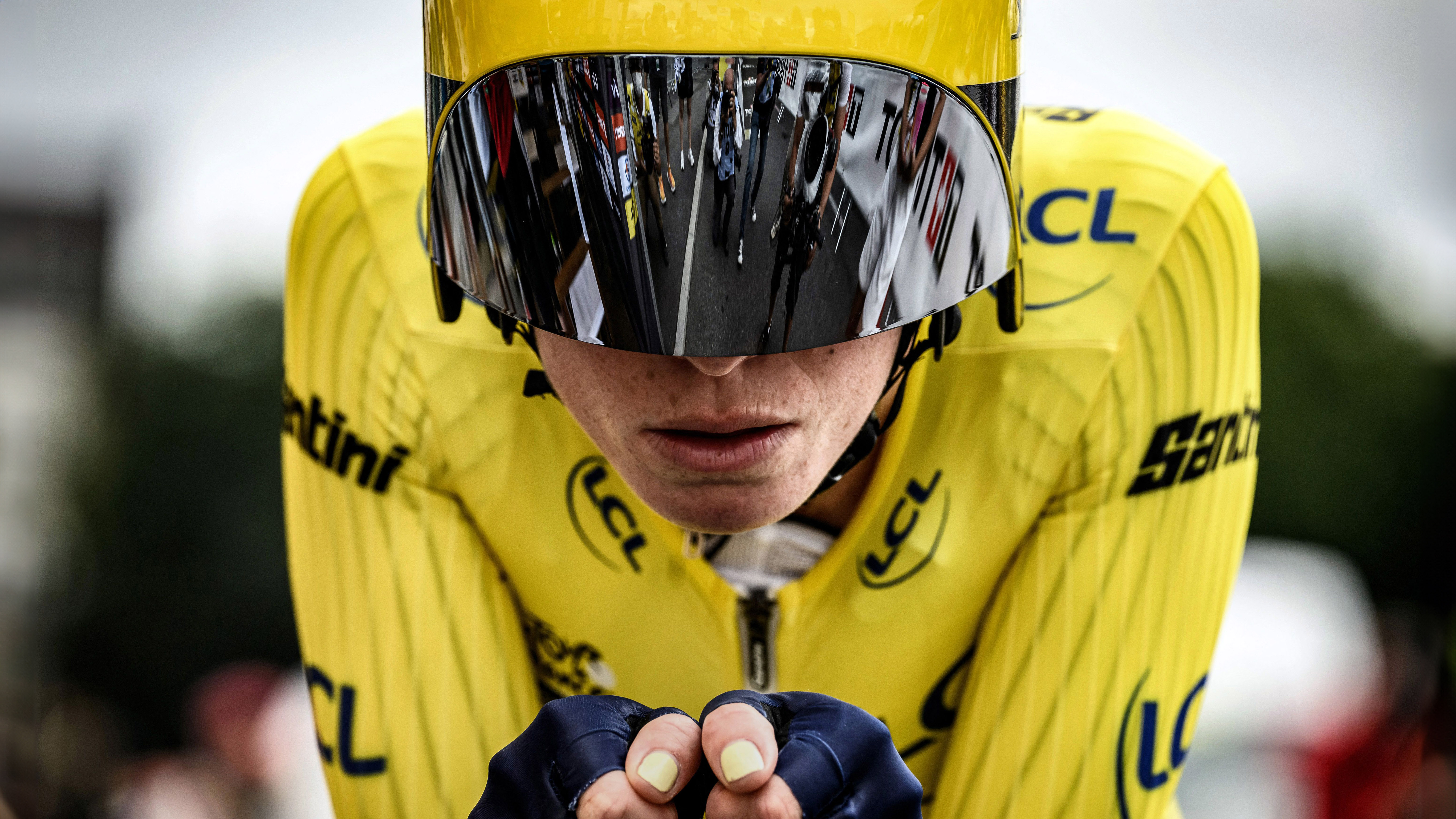
Million Euro contracts, expansive budgets and trickle-down economics - the Tour de France Femmes effect
In the last few years, women’s cycling has been through waves of dramatic and wide-reaching change. Go back to 2019, and you’ll find a situation that was very different to today: no real Tour de France for women, no Paris-Roubaix, no WorldTour team status, no minimum wage for women, and no huge contracts. Fast forward to today, and the women’s peloton has all those things and more, with the trajectory only heading upwards.
Part of this is down to global trends in women’s sports - viewership is growing exponentially, commercial value is up across the board - but much of it is down to some specific changes in women’s cycling. In 2022, Tour de France organisers ASO put on the first Tour de France Femmes avec Zwift, the first multi-day Tour de France race for women in decades, and the change stemming from just this one race has been impossible to ignore.
By all accounts, the financial standing of the sport has skyrocketed in the last few years, with sponsors investing more money, team budgets growing, and riders earning more than ever. More money is coming into the sport, and more is being spent within it, as increased professionalism means higher costs for teams and race organisers.
The headline figures all seem positive, but just how significant has the impact of the Tour been? What else has changed since 2022? Are there any negatives hidden behind the positives?
It’s a complex and wide-ranging topic in the sport, but the one recurring theme for all stakeholders - teams, races, sponsors, riders - is always visibility.
“The impact for all the teams that participate in the Tour de France is really important,” FDJ-SUEZ team manager Stephen Delcourt told us. “For me, close to 60 per cent of my visibility revenue is during the Tour de France - it could be 50 one year, 70 another depending on the results - but that is the impact.”
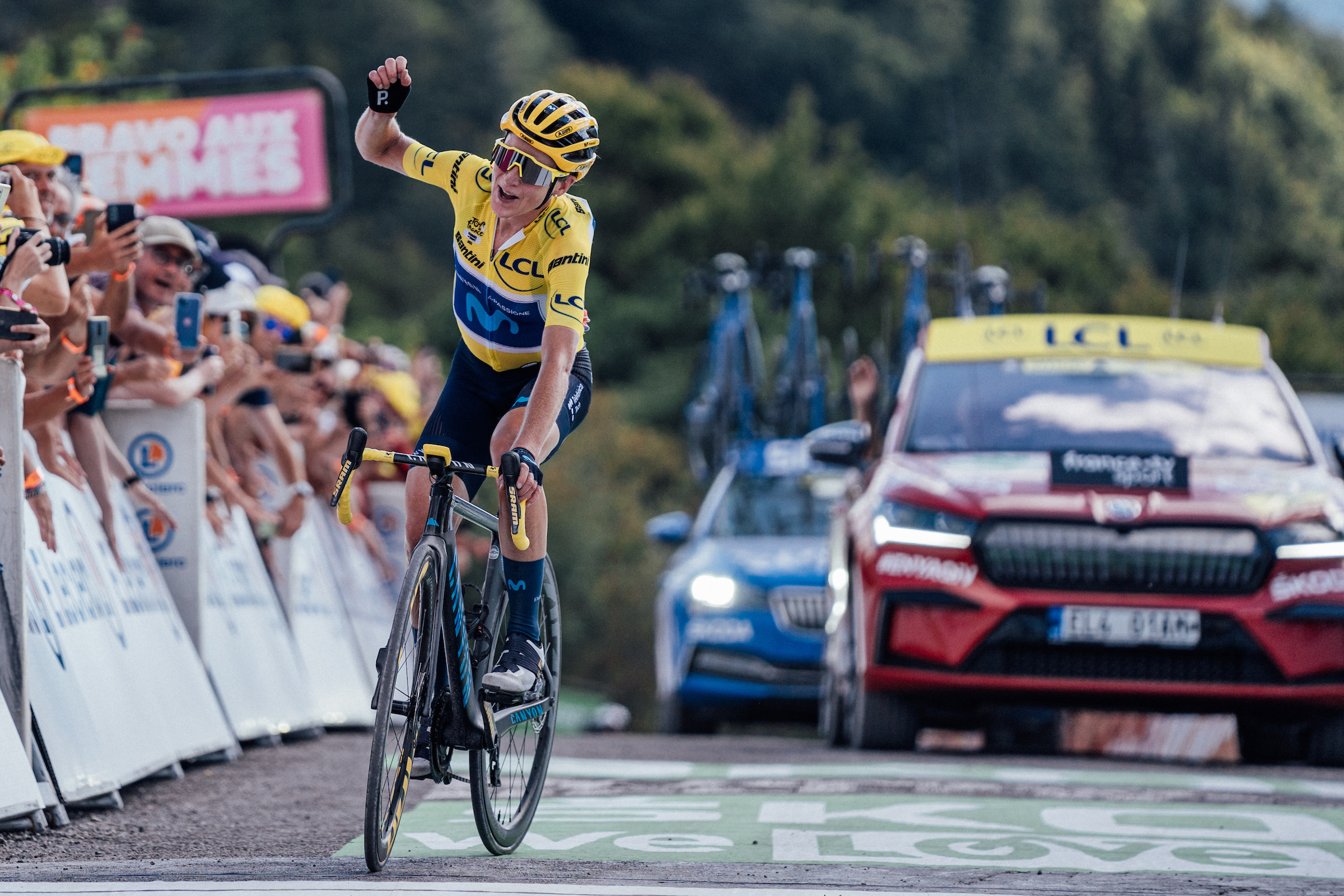
For riders, the stature of the Tour offered new opportunities, new ambitions. According to her partner and manager Jan de Voogd, defending champion Demi Vollering’s Tour goals began to form when they saw how impactful its precursor, La Course, was.
“Demi came third [in La Course 2020] and she was on the podium with Lizzie Deignan and Marianne Vos. And we were like ‘hey, this is cool, you see the Tour de France logo’, and then immediately Demi dreamt of the Tour,” De Voogd explained.
“Then the year after in 2021 for SD Worx, she won it. And that was the first time we thought ‘okay, this is big’ because if you win something to do with the Tour de France, that’s the thing everyone in the world knows. A lot of people don’t know much about cycling, and certainly not about women’s cycling, but everyone knows the Tour de France.”
The next year, the Tour de France Femmes avec Zwift came, and things began to change, with more eyes on women’s cycling than ever before.
“The broadcast perspective was why it was so important that the Tour de France Femmes came back,” De Voogd added. “It should be broadcast, there should be live coverage, and if it is to be seen by more people, then the brands and the money will follow, not the other way around.”
Bigger teams, bigger budgets
By all accounts, a lot of brands and a lot of money has followed since the news of the relaunch of the Tour de France Femmes. In FDJ-SUEZ’s case, the numbers speak for themselves. In 2014, they had a budget of just under €400,000, Delcourt told us. In 2020, the year the first women’s Paris-Roubaix was planned, that was €1.2 million, and in 2024 it’s €3.8 million. The growth in ten years has been huge, and Delcourt believes “100%” that the team would not be where it is if not for the Tour de France Femmes.
“Ten or 15 years ago, it was impossible to think about where we are now,” he said. “At the beginning of the team and for the first ten years, it was only volunteers on the team working around the riders. We talked about professional teams, but that was only in name, because the riders were not professional. But step by step we invested more, we looked for more budget, and now FDJ-SUEZ has more than 40 full-time employees, staff and riders, we have more than 120 sponsors.”
Though we don’t know all the specifics for every team, it appears that the trend is similar across the board. Teams are constantly gaining new sponsors, team closures have been rare, and rosters are steadily growing. In 2020, the average size of a WorldTour team was 13.7 riders, this year, it’s 16.3. Teams are also spending more on altitude camps, equipment, media teams, the list goes on.
Things were changing before the Tour, but the launch of that race, and the accompanying broadcast deals, social media campaigns and general visibility has skyrocketed things.
“Now the speed is really, really fast,” Delcourt said.
The only question is if everything is moving at the same velocity. Most teams appear to be riding the wave well, but there are concerns. Rider salaries are one: riders and agents know that teams have bigger budgets, and know they are racing more professionally, so some are asking for more compensation, but it’s a tricky balance of budgets for team managers.
“It's a human reaction to always want more. Everybody wants more. We invest a lot in altitude camps, nutrition, material testing, et cetera, which they need because they work a lot. After, for the salary, it's hard with the expectations because the market [this year] was crazy with a high number of top riders without contracts for 2025, and on the other side we need to be really vigilant about the price, because the cost of everything is crazy. And I think it can be hard to understand why the costs increase like this,” Delcourt said.
“It's easy to say 'okay, I want to increase this rider's salary or that rider's salary' because another team is offering more money or something, but we have a lot of really bad examples when teams want to follow the market without securing their revenue and without calculating and evaluating the cost of every race, and then they get to the end of the season and they're not able to finish it or continue the year after. So that is my first job, to make sure we have the budget to continue.”
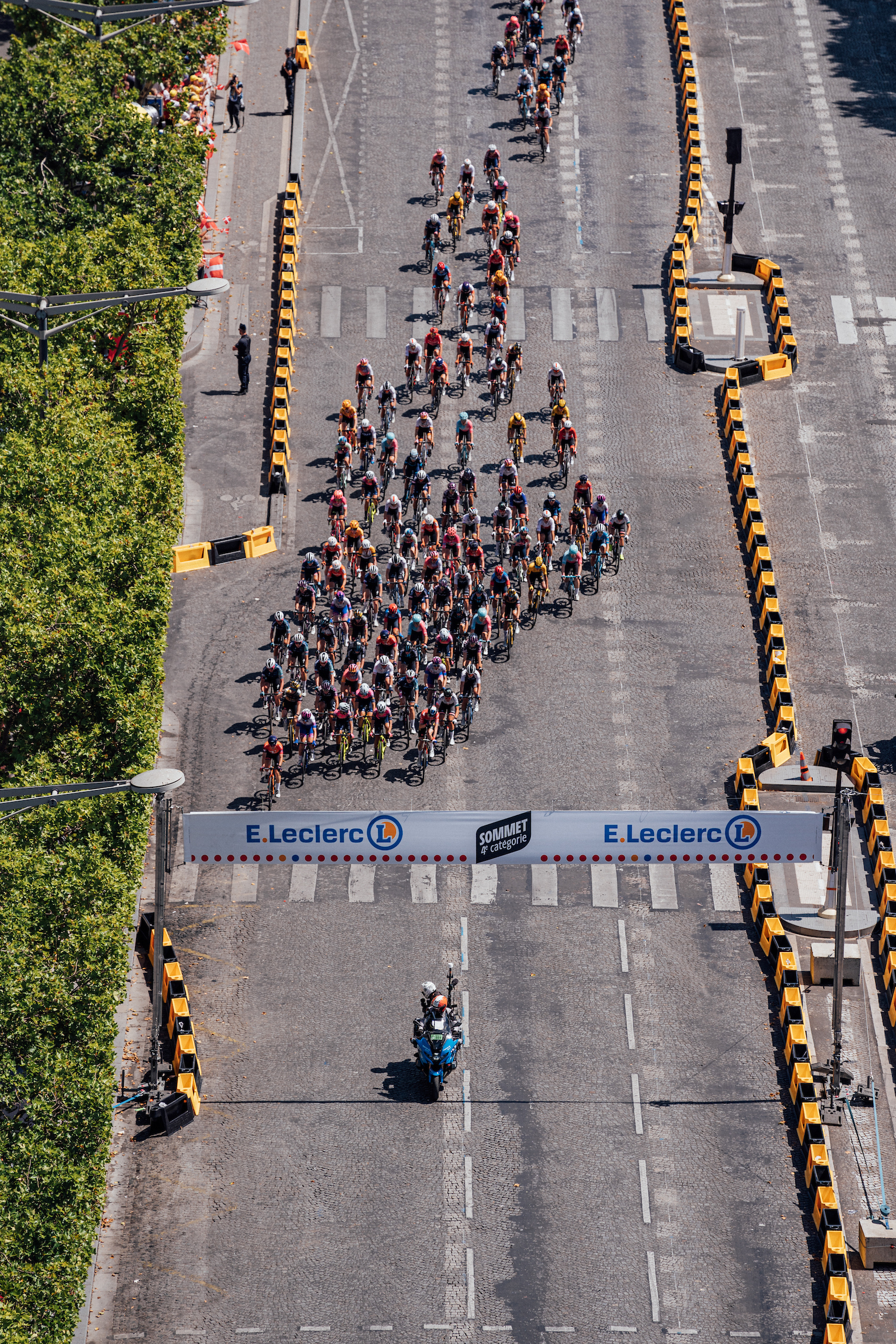
Are races stepping up?
As more money is being invested into riders, teams and the big-ticket races, one area that is perhaps overlooked is the races themselves.
Thanks to their status as the biggest race organisers in cycling, plus the sponsorship they have secured for the women’s race, ASO can put a lot of money into the Tour de France Femmes. Other races, especially ones who only have a women’s race, do not have this luxury, and the difficulties are beginning to show.
“How is it possible to accept that for the Giro and Vuelta, they pay for only five staff?” Delcourt asked. “It is impossible to accept that. When you have seven riders, two cars in the race, the minimum is two sports directors with the UCI licence, then you need two mechanics - well, now all the big teams have a bus and a big mechanics truck, so you need a minimum of three mechanics, really three sports directors minimum, and then you need other assistants. In the Giro when it was really hot, you need at least five people to help in the feed zone and with water and ice.
“So we have a minimum of fifteen staff. In my team, it was 23, because we have the communication teams et cetera, but the organiser pays for only twelve people [riders included],” he explained.
At the Giro, this meant that FDJ spent an additional €12,000 of their own money just to be at the race. At the Tour de France, the organisers will pay for nine staff members, and an extra €5,000. There’s still a gap that the team have to cover, but it’s a very different proposition.
As well as making it more difficult for teams to get the most out of smaller races, this one example shows how different parts of the sport are not growing at the same rate. Teams are bigger and more professional and asking for more, and the races can’t yet match that.
It’s clear already that races are struggling to keep up in the post-Tour de France Femmes world. Though now revived, the Women’s Tour was the first victim, a long-standing women’s race that nearly disappeared after its organisers folded, but was saved by British Cycling. Ronde van Drenthe, another long-running event, will not be returning in 2025, as the calendar becomes weighted towards races with men’s equivalents.
For women’s cycling to really progress and professionalise, one could argue that a culling of the races that can’t meet the new standards is needed. And this might be right, but it’s proof that the Tour de France effect is not a universal positive for all, only those that can keep up with the rapidly rising expectations.
The million Euro question
If the Tour de France Femmes was a watershed moment for women’s cycling, the sport had another earlier this year when rumours started to swirl that Tour de France winner Demi Vollering had been offered a €1 million contract from UAE Team ADQ at the end of 2023.
Now, it’s important to note that the veracity of this rumour has never been confirmed by any of the parties involved, and Stephen Delcourt - the boss of the team who is heavily linked with Vollering for 2025 - said at the time, and maintains now, that no team could feasibly afford such a salary.
So it may have been just that, a rumour, even a negotiating tool. But the fact that it felt believable, and could well have been a possibility at some point, speaks volumes to where women’s cycling is right now. The idea of a Tour de France winner earning seven figures seems within reach, and not outlandish, as it may have been a few years ago.
The big question is: how did we get to this point, where a million euros for Vollering felt plausible? Why is it the Dutchwoman who is likely to be the highest-paid rider in the peloton? Why her instead of world champion Lotte Kopecky, or probable greatest of all time Marianne Vos? The obvious answer is that Vollering has won the Tour once, and is the favourite to do it again in 2024, so she is at the centre of all the heightened visibility and commercial value that the Tour brings.
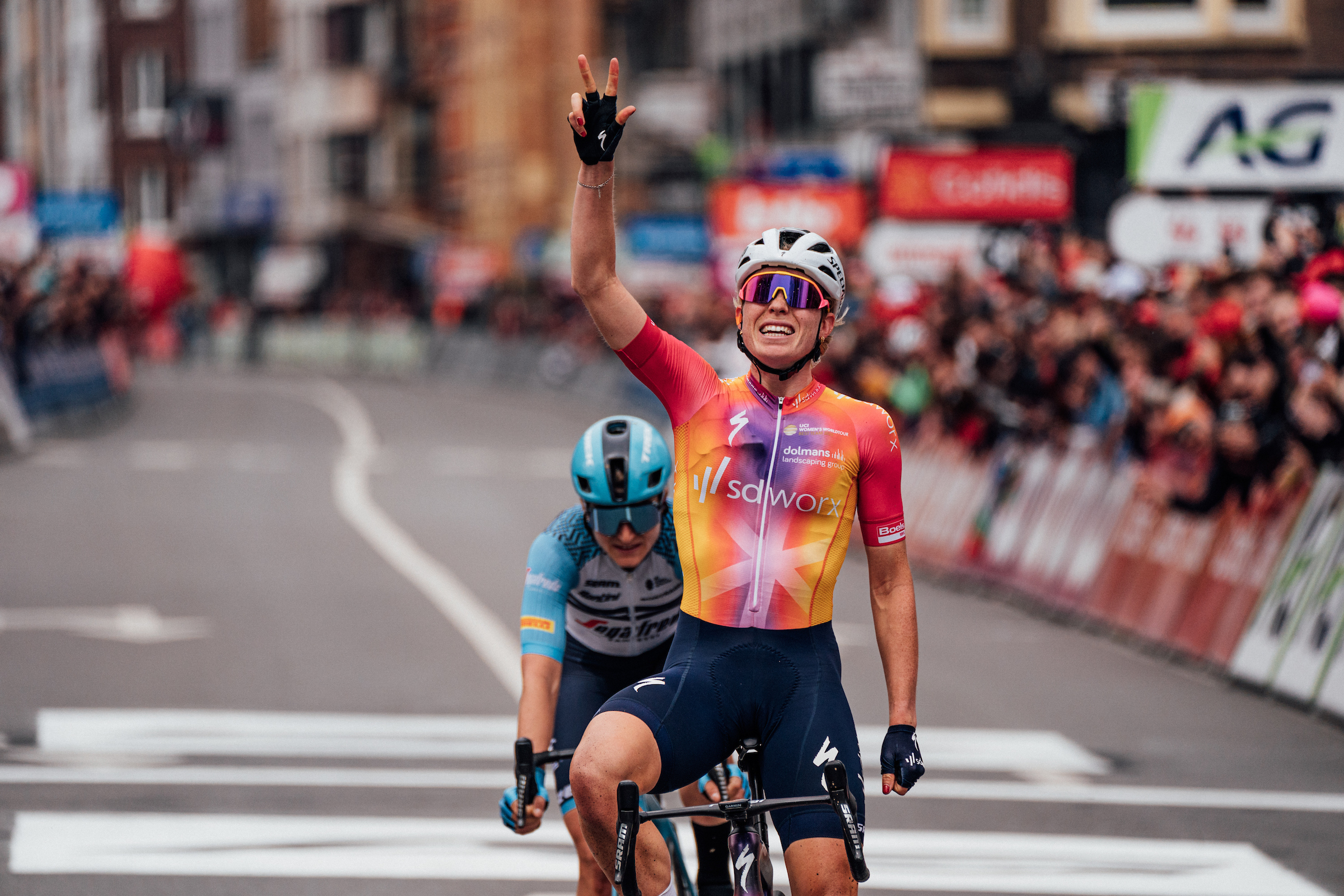
However, according to De Voogd, there’s another thing that has helped Vollering to get where she is: her image and her brand. Conversely, that never meant harnessing sponsorship wherever possible, but being careful, considered and not driven by money.
“After Demi’s early successes, we immediately started to get attention from brands, just small ones, but we always had a strategy or a vision that we wouldn’t do that, because it distracts from her business, and her business is to be the best in the world. For Demi it was like ‘I want to become the best rider in the world and be myself. I'm authentic, and I am being me. I will not be an influencer, recommending different products. And that was authentic, I think, special and at the same time so normal. Big brands recognise this and look for these authentic characters with their strong, engaged following.”
This image, as authentic as it may be, is definitely curated. On Vollering’s Instagram, where she has 244,000 followers, you’ll see a carefully chosen selection of moments. Yoga, hiking with her dog, camping, her personal hashtag at the bottom of most captions. What she posts feels deliberate, and it is. She has taken the visibility that comes with winning the Tour and grown it into an even bigger personal brand.
“People started to like it and started to follow her,” De Voogd added. “So we saw that she got more attention and more following. But you have to do it, you have to post. I know a lot of women - and men, but it’s maybe less important for them because they have a big audience and broadcasting - but I know a lot of women who are doing amazing, interesting stuff, but they don’t post it. I don’t think social media should be your life, but it is a tool you should use to get that wider audience and attention, and most importantly to tell your story.
The news that really cemented Vollering’s status as not just an athlete but as a star and sporting personality was her announcement as a Nike athlete earlier this year. This is something she and De Voogd had dreamt of for a long time, turning down other possibilities to hold out for Nike. They played the long game and ended up securing one of the most important sponsorship deals in recent years – a real first for women’s cycling, and a symbol of just how much the sport’s standing has changed.
Trickle down economics or a widening gap?
While big salaries, expanded budgets and high-profile races are something to be celebrated, it’s also patently clear that at the moment, the biggest financial gains are limited to just a few riders, races and teams.
Commercial interest from brands and sponsors is growing, but it remains about commercial value - so exposure and profit. Brands want to invest their money in the teams and races that will give the most return. That means big races, well-known names, and successful teams. Whilst some companies have been incredibly generous with their support of women’s cycling, even when it was not where it is now, sports sponsorship is not a charitable pursuit, and most companies will follow where the profit or benefit is - which is the top of the pyramid.
While the WorldTour teams seem more stable than ever, Continental outfits are still scrambling from year to year, relying on little money and unpredictable race invites. Lifeplus-Wahoo, for example, lost their Trek sponsorship when the brand moved over to launch the Trek-Segafredo team, and this year missed out on Tour selection, which they told Cycling Weekly immediately meant hard conversations with sponsors.
In some ways, the poor visibility of women’s cycling a decade ago was a leveller. So little racing was broadcast, it meant everyone was on a similar playing field in terms of visibility. Now, if you’re a team doing a program of largely non-televised, non-WorldTour races, it’s hard to see how you could attract interest from a brand that could invest elsewhere, and see their logo broadcast to the world during the Tour de France Femmes.
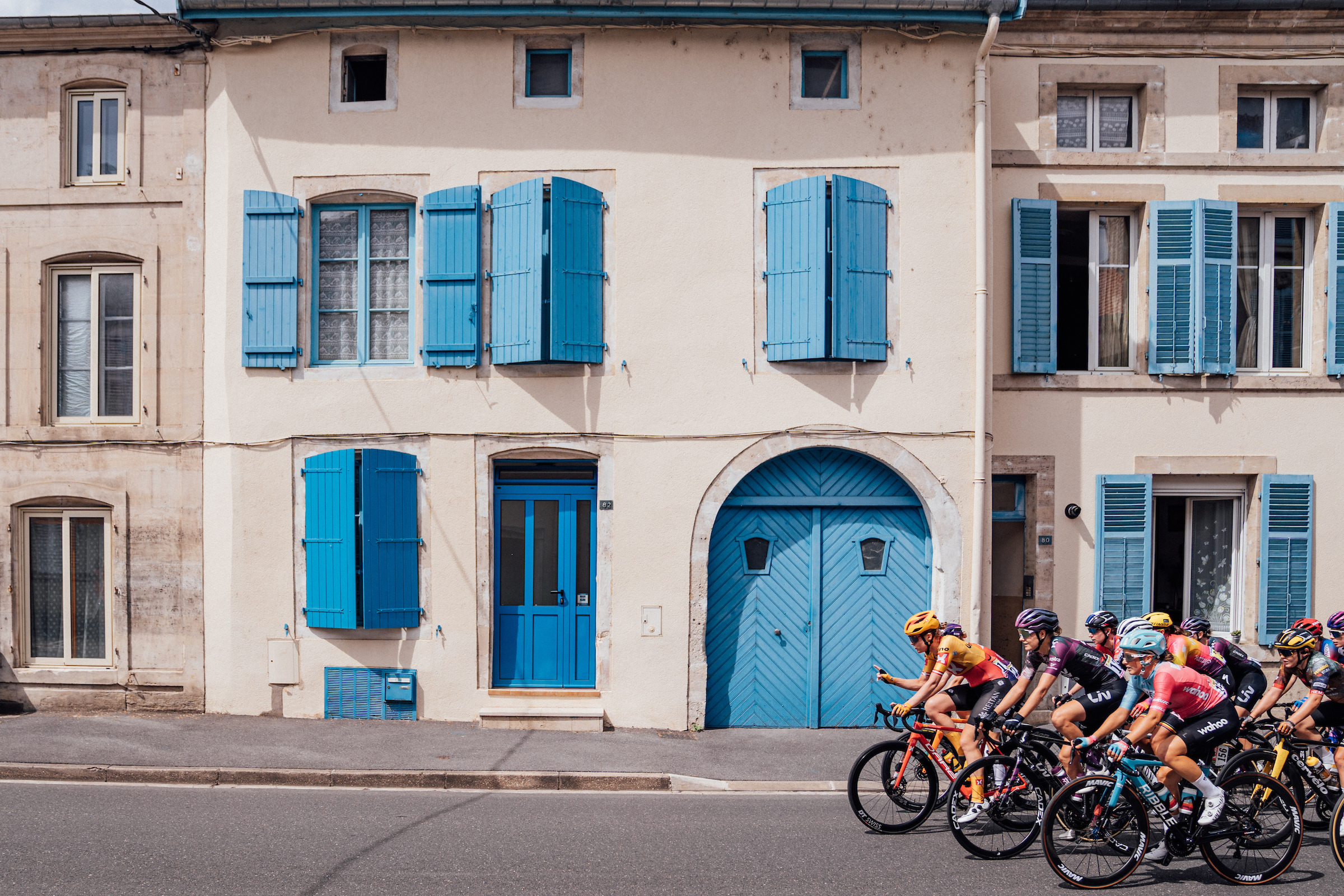
A brand like Canyon, for example, funnels a lot of money into women’s cycling, supporting three WorldTour teams, the most of any bike brand. “We are striving for a balance in our investments in male and female pro sports,” the brand’s VP Corporate Communications, Tina Hunstein-Glasl, said. But, that is focused at the top.
“We focus on highly competitive teams and athletes, which also includes encouraging new talents and upcoming stars,” Hunstein-Glasl said. “For example with CANYON-SRAM Generation and the Fenix-Deceuninck Development team we are able to support a diverse group of highly ambitious women who are willing to invest in their future and the future of cycling by breaking new grounds, hopefully developing into talents for future female WorldTour teams.”
There is an argument to be made that money coming into the sport at any level can be good for the whole pyramid, directly or not.
“People will say ‘it’s so unfair for the bottom’ but I don’t think so,” De Voogd said. “If there is more at the top, more will also go to the bottom. A Nike deal for women’s cycling is great, because it will get more attention, a bigger audience, and it will only lift athletes higher. I think a lot of women in the peloton know that, and they think ‘yeah, this is great for us’ and they only will lift up their game’.”
When whispers of a possible €1 million contract first emerged, it was met in certain corners with almost criticism, as some argued that if there’s money like that in the sport, it should be shared around more equally - why should so many struggle whilst wealth accrues at the top?
The idea of one rider earning such a figure whilst others are paid so little does bristle, but it’s an inequality and disparity we see in men’s sport, with much less consternation.
“I would say it was like sexism in a way,” De Voogd said of the negative discussion around a possible million-euro contract. “Pogačar could renegotiate his contract and it could come out that he was making, say, €20 million a year, I don’t know, but he’s certainly worth it, and compared to other sports, you could say he’s still not earning enough. But then they are surprised that a woman could make a million in a year. Why should that ever be a problem?”
The reality for the bottom of the pyramid
In theory, De Voogd’s question is fair, and the assertion that it should help everyone is accurate. Rumours of million-euro salaries make the sport look serious, professional and valuable, which it is, and that should benefit the sport as a whole. The problem is, the materialisation of that can be slow. Trickle-down economics can work, but those at the bottom can find themselves waiting a long time for the trickle to reach them.
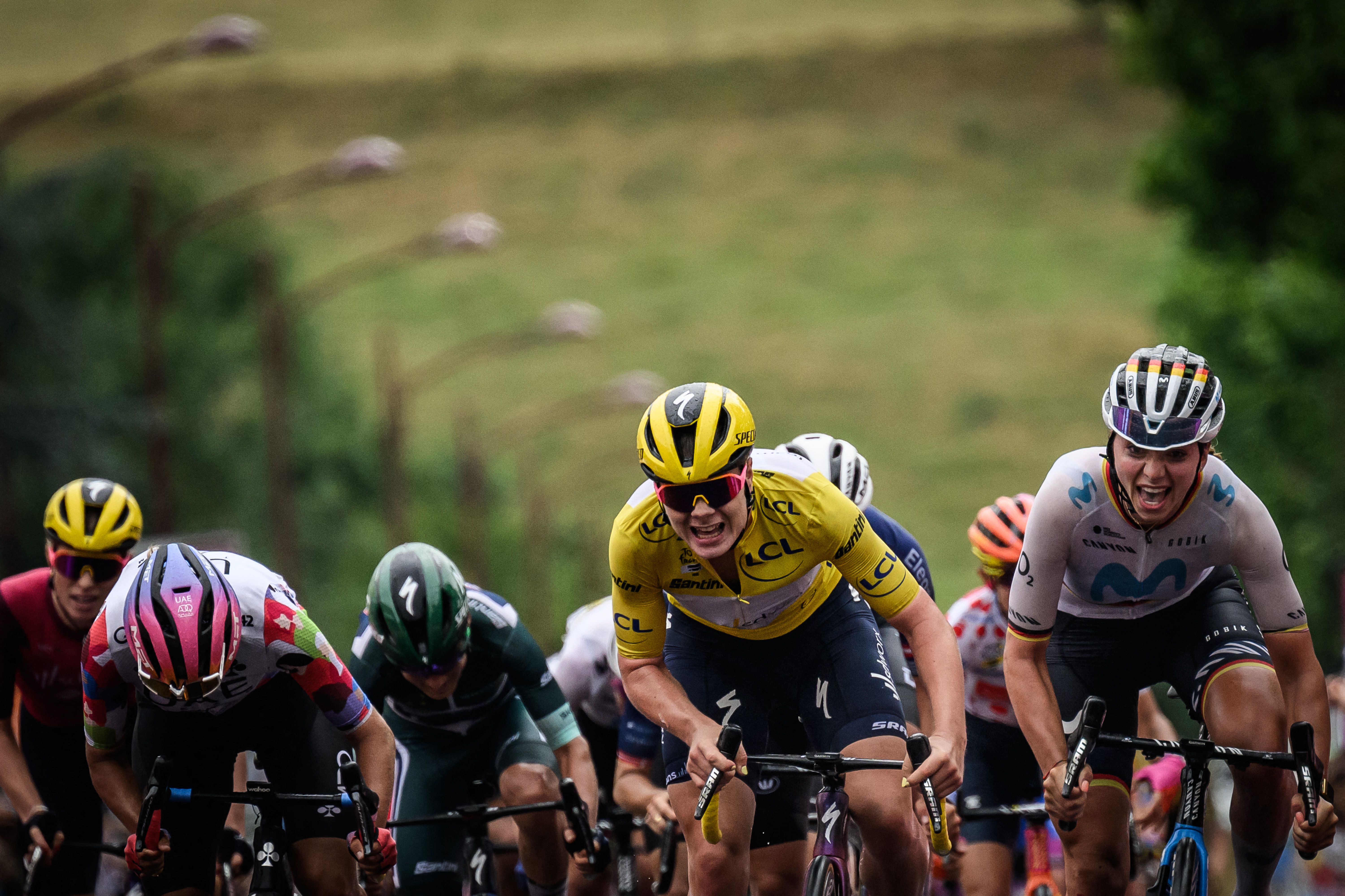
While sponsors, races and teams like to shout about the big and promising numbers, organisations like The Cyclists’ Alliance are doing the hard work to uncover the less shiny truths. In 2023, their annual survey revealed some concerning numbers.
WorldTour riders received a mandated minimum salary in 2023, but at Continental level, the financial situation is concerning. Forty per cent of riders in Continental teams received no salary at all at the time of the survey, and most of those that did received less than €10,000 a year, in the season when the WorldTour minimum wage grew to over €30,000. The number of riders receiving no salary was up on the 2022 figures, at a time when things are meant to be getting better, not worse. In the TCA’s own words: “The disparities between riders in the World Tour and riders outside the World Tour continue to grow wider.” The benefits are not yet trickling down the pyramid.
Since the introduction of WorldTour level, the launch of the Tour de France Femmes, and the rumours of huge deals and salaries, we’ve been told that this will all benefit the sport as a whole. In 2022, the Tour did change everything, and many teams and riders have felt a huge boost, while those outside of the upper echelon have been promised better is coming.
It may be on its way, but in 2024, the bottom rung of women’s cycling is still very much waiting for that supposed benefit to arrive.
If you subscribe to Cyclingnews, you should sign up for our new subscriber-only newsletter. From exclusive interviews and tech galleries to race analysis and in-depth features, the Musette means you'll never miss out on member-exclusive content. Sign up now







